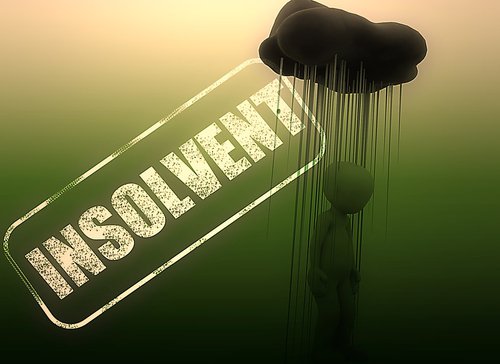
WHAT IS CHAPTER 7 BANKRUPTCY?
 During tough, unexpected times, related to perhaps a sudden illness or loss of a job or spouse, you may find yourself overwhelmed with too many debts and financial responsibilities and not enough income and/or assets to cover them. Though it may seem challenging to accept, for some people declaring bankruptcy is one of the ways they are able to manage these liabilities. Many very famous and successful people in history such as Henry Ford, Walt Disney and Donald Trump went through bankruptcy proceedings which helped them to reestablish their financial foundation and set them up for spectacular success down the road. One of the forms of bankruptcy that may help with your current state is Chapter 7. Learn below of what is chapter 7 bankruptcy and how the procedure works to help catapult you to a stronger and more robust financial future.
During tough, unexpected times, related to perhaps a sudden illness or loss of a job or spouse, you may find yourself overwhelmed with too many debts and financial responsibilities and not enough income and/or assets to cover them. Though it may seem challenging to accept, for some people declaring bankruptcy is one of the ways they are able to manage these liabilities. Many very famous and successful people in history such as Henry Ford, Walt Disney and Donald Trump went through bankruptcy proceedings which helped them to reestablish their financial foundation and set them up for spectacular success down the road. One of the forms of bankruptcy that may help with your current state is Chapter 7. Learn below of what is chapter 7 bankruptcy and how the procedure works to help catapult you to a stronger and more robust financial future.
Background
For the layman, understanding what is chapter 7 bankruptcy may seem daunting at first. However, this legal term essentially refers to a legal financial procedure whereby a debtor’s non-exempt assets are liquidated by a trustee and the proceeds are allocated to meet the liabilities held by various creditors. A debtor’s eligibility for the legal filing is satisfied by the means test accompanying the United States bankruptcy code. Traditionally for most consumers filing Chapter 7, all of their assets are considered exempt, and thus no assets exist eligible for liquidation and subsequent dividends allocated to creditors. This form of bankruptcy is typically the most expedient under the legal code available to married partners, business partnerships, corporations and individual citizens.
Filing Procedure for Chapter 7
A chapter 7 procedure commences with the filing of a formal petition, schedules and statements related to financial conditions. These documents compel the entity to itemize all of their assets, liabilities and recent financial history. This serves as the most significant and drawn out portion of the bankruptcy filing stage.
All debts must be listed even if it is not eligible for being discharged. From there, the court will appoint a trustee and provide
notification to the creditors listed in the appropriate schedules of your bankruptcy filing.
First Meeting with Creditors
The debtor is required by law to appear at the official “first meeting of creditors”. At this stage, the trustee reviews what is chapter 7 bankruptcy and has the authority to question the debtor under oath concerning their liabilities and assets. Creditors may exercise the same rights as well.
Steps Following the First Meeting
After the aforementioned step, should non-exempt assets exist, the trustee typically takes control of them for liquidation and distribution of dividends to pay for the administrative costs related to the case as well as to the creditors in question.
Reaffirmation and Arriving at Discharge
At this stage, the court expects debtors to fulfill their intent to satisfy debt obligations secured by personal assets such as property. From there, the trustee and affiliated creditors are provided with a 60 day window in which they have right to challenge the debtor’s right to discharge a specific debt.
Discharge
Within 120-180 days the individual debtor will realize the discharge from the initial filing date. The discharge encompasses all dischargeable liabilities listed at the beginning of the procedure. Note that business partnerships and corporations do not have the right to exercise a discharge under the bankruptcy code.
Following the Discharge
Be aware that certain forms of debts are not dischargeable during a Chapter 7 bankruptcy, as they are considered exempt by law. Such liabilities include liens, student loans, priority taxes and child support. Other pertinent debts that were reaffirmed during the procedure also are not dischargeable during the bankruptcy.